Tokyo Tech Bulletin is an email newsletter introducing Tokyo Tech's research, education, and students' activities. The latest edition, "Tokyo Tech Bulletin No. 71", has been published.
To get the most recent news directly to your inbox, subscribe to Tokyo Tech Bulletin outer now.
SPECIAL TOPICS
New Design Rule for High-Entropy Superionic Solid-State Conductors
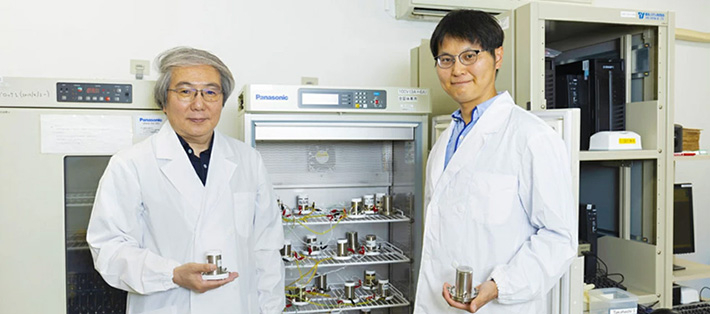
Solid electrolytes with high lithium-ion conductivity can be designed for millimeter-thick battery electrodes by increasing the complexity of their composite superionic crystals, report researchers from Tokyo Tech. This new design rule enables the synthesis of high-entropy active materials while preserving their superionic conduction.
Twenty-two Student Ambassadors from sixteen countries and regions appointed for academic year 2023

Tokyo Tech's Admissions Section launched the Tokyo Tech Student Ambassadors initiative in 2020. As representatives of Tokyo Tech, they share their experiences and impressions of campus life, studies, and research at the Institute through the Ambassadors' Blog. They also participate in Tokyo Tech's study abroad fairs, and contribute to other admissions and public relations activities while fostering stronger bonds between international students.
From sweets to space, science connects the world
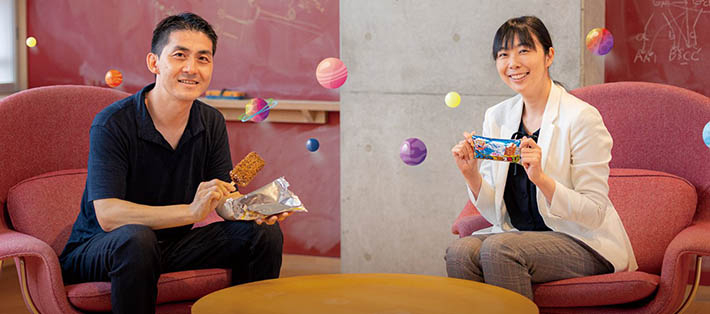
Mayu Takeshita, a Tokyo Tech graduate, is the fifth president of Takeshita Seika, which manufactures and sells "Black Mont Blanc" (a local specialty ice cream in Kyushu), and Associate Professor Hiraku Sakamoto, who develops nanosatellites for proof-of-concept experiments in space. What emerged from the dialogue between these two professionals from different fields is an unexpected common denominator: space exploration. Tracing the trajectory of these two reveals the fundamental value of science.
Research
Revolutionizing Brain Monitoring and Stimulation with Thin-Film Neural Electrodes
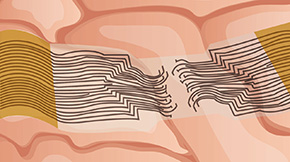
Flexible thin-film electrodes placed directly on brain tissue show promise for the diagnosis and treatment of epilepsy, as demonstrated recently by scientists at Tokyo Tech. Thanks to an innovative yet straightforward design, these durable electrodes accurately match the mechanical properties of brain tissue, leading to better performance during electrocorticography recordings and targeted neural stimulation.
A First for Ferrocene: Organometallic Capsule with Unusual Charge-Transfer Interactions
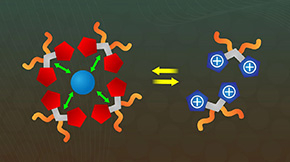
An organometallic capsule that can reversibly assemble and disassemble in response to chemical stimuli was recently developed by chemists at Tokyo Tech. Comprising ferrocene-based bent amphiphiles, this new capsule can act as a host for various types of guest molecules, such as electron acceptors and dyes. Thanks to the controllable release of its cargo, the capsule would find applications in catalysis, medicine, and biotechnology.
New Insight for Stabilizing Halide Perovskite via Thiocyanate Substitution
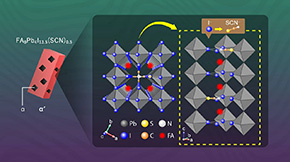
α-FAPbI3, a promising solar cell material with a cubic perovskite structure that is metastable at room temperature, can be stabilized by introducing a pseudo-halide ion like thiocyanate (SCN–) into its structure, demonstrated by Tokyo Tech researchers in a new study. Their finding provides new insights into the stabilization of the α-phase via grain boundary and pseudo-halide engineering.
Exploring Light Neutron-Rich Nuclei: First Observation of Oxygen-28

The neutron-rich oxygen isotopes oxygen-27 and oxygen-28 exist as very short-lived resonances, report scientists from Tokyo Tech based on the first observation of their decay into oxygen-24 and three and four neutrons, respectively. Notably, the oxygen-28 nucleus is found not to be "doubly magic" as expected in the standard shell-model picture. This study provides valuable insights into the nuclear structure.
Overcoming the challenges to synthesising iron-sulfur proteins outside the glovebox
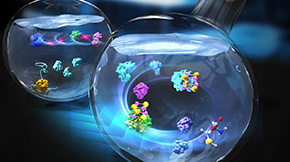
Fe–S clusters, which are a part of Fe–S proteins, are found across all forms of life. They play a significant role as biological cofactors—helper molecules that assist these proteins in different biochemical transformations—that are involved in respiration and metabolism. These clusters are of keen research interest since they are considered to be a critical part of evolution. Having convenient methods to synthesise Fe–S proteins will hopefully advance our understanding of young Earth biology and help us answer the ultimate question of the origin of life.
Unveiling Novel Mechanism Underlying the Heat Shock Response in Escherichia coli

IbpA, a protein that partakes in the heat shock response in Escherichia coli bacteria, serves more functions than previously thought, as revealed by scientists at Tokyo Tech. Through in-depth experiments involving genetically engineered E. coli strains, the researchers find that IbpA suppresses the translation of messenger RNA of σ32, a master protein factor that regulates the expression of around a hundred genes of heat shock proteins, including IbpA itself.
α-Al2O3 Protective Layer That Sticks to Metal Surface with Functions of an Anchor and Peg
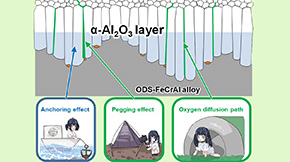
Fusion reactors, fast breeder reactors, and solar thermal power plants are being developed as power plants with low environmental impact and no resource constraints. Since these power plants operate at high temperature with large-heat transfer, scientists are studying the use of components that use liquid metal as a coolant. The liquid metal blanket and the liquid metal divertor are among the most important components of fusion reactors and have attracted attention as innovative energy conversion devices. However, the selection of structural materials that are chemically compatible with high-temperature liquid metals has been a challenge.
A Nanocapsulation Strategy for Facile Analysis and Processing of Insoluble Aromatic Polymers in Water
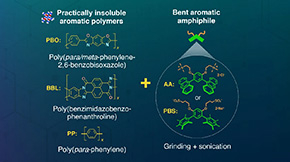
Polymers composed of aromatic frameworks are attracting increasing attention for the construction of highly functional materials. So far, their application has been limited by their virtual insolubility in organic solvents and water. Now, researchers at Tokyo Institute of Technology (Tokyo Tech) have developed a new, environmentally benign methodology for the water-solubilization of such polymers utilizing bent aromatic amphiphiles. The solubilization enables not only structural and spectroscopic analysis of the polymers but also their facile processing into various thin films.
Water-Durable Perovskite-Oxynitride Supported Nickel Catalysts for Ammonia Decomposition
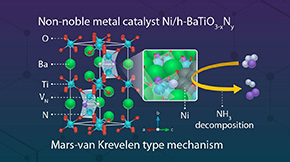
The ammonia decomposition performance of nickel-based catalysts can be significantly improved by supporting them on a perovskite-type oxynitride like h-BaTiO3−xNy, demonstrate researchers from Tokyo Tech in a new study. They found that replacing oxygen sites in the lattice of the support material with N3– ions reduced the operating temperature by over 140℃ and increased the efficiency of the catalyst.
Investigating Interactions at Molecular Junctions for Novel Electronic Devices
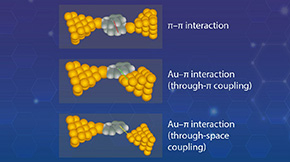
Key role in electron transport, reveals a recent study conducted by researchers at Tokyo Tech. Through simultaneous surface-enhanced Raman scattering and current–voltage measurements, they found that a single dimer junction of naphthalenethiol molecule shows three different bondings, namely π—π intermolecular and through-π and through-space molecule–electrode interactions.
In the spotlight
. Any information published on this site will be valid in relation to Science Tokyo.















